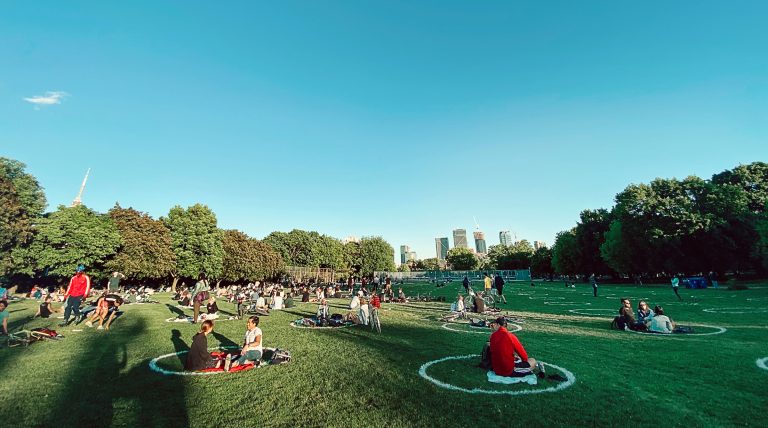During the research process, we had the opportunity to explore different perspectives on how to promote resilience in neighbourhoods and cities, which resulted in a variety of resources. Listed below, you will find academic and professional publications, as well as a series of webinars, where we were joined by experts to discuss the topic of designing for neighbourhood resilience while addressing social and ecological issues in an integral way.
Together Apart
Case Description The temporary art installation, ‘Together apart’, consisted of “375 coated mesh fabric ribbons stretched between the roofline of the Billund community building and the ground. Connected to the ground along an undulating line that curves in on itself, the ribbons create a series of cellular spaces.” The installation attempted to “capture the tension…


















